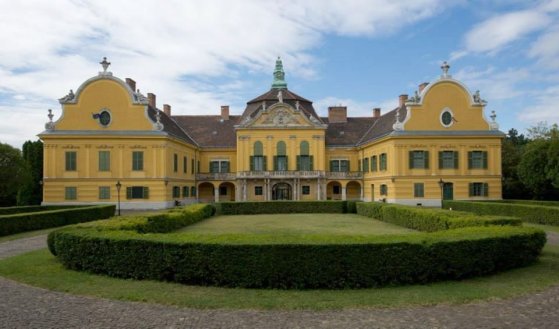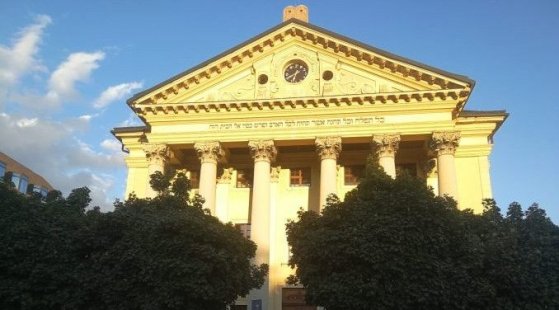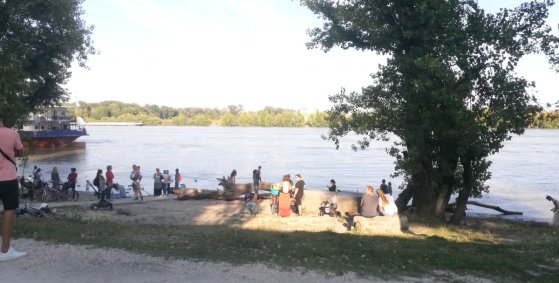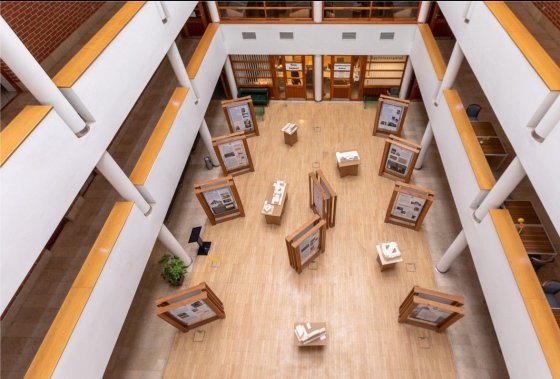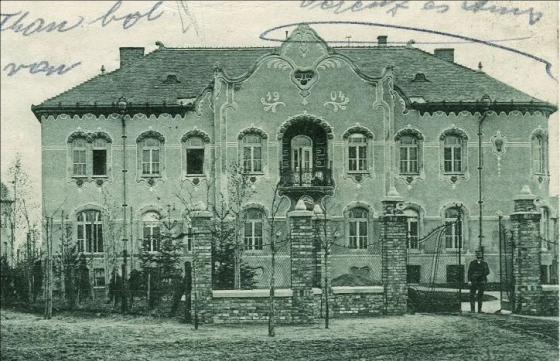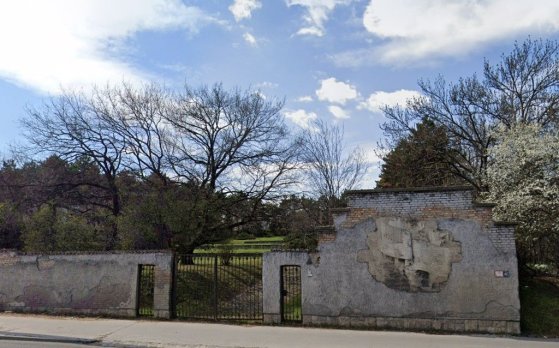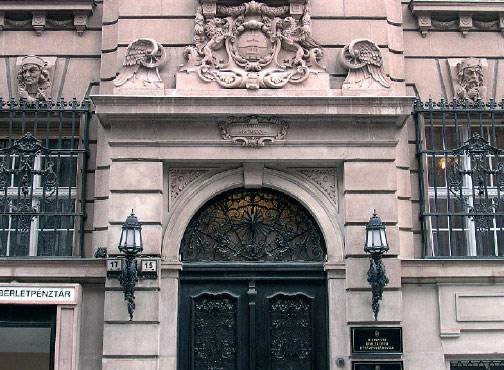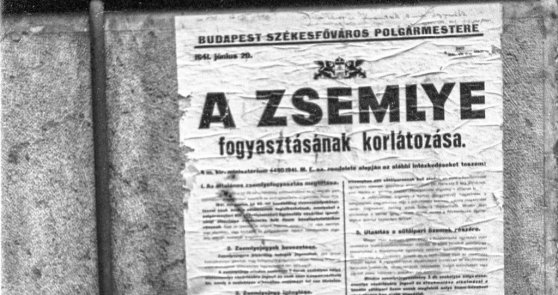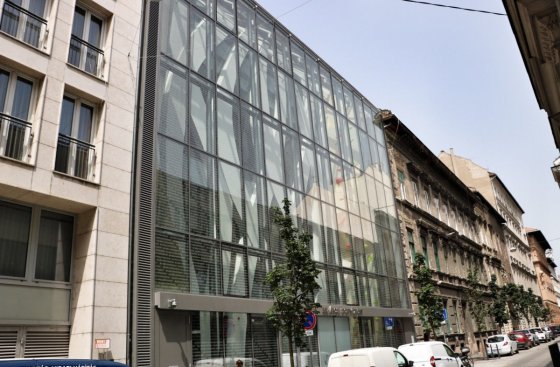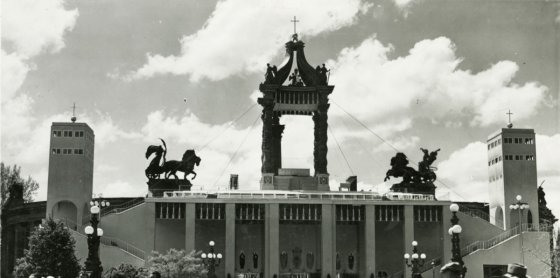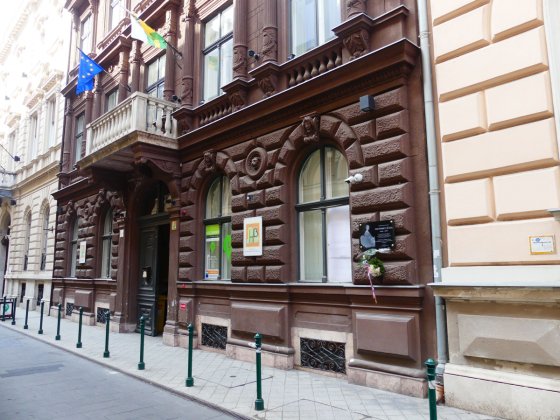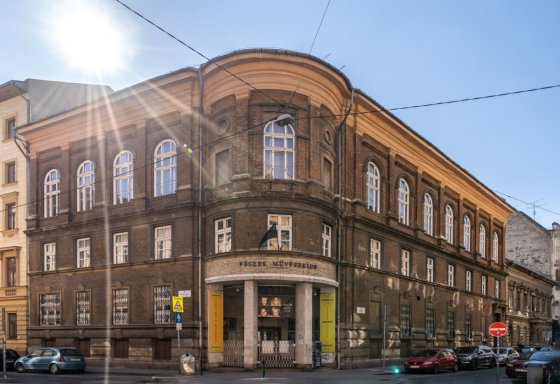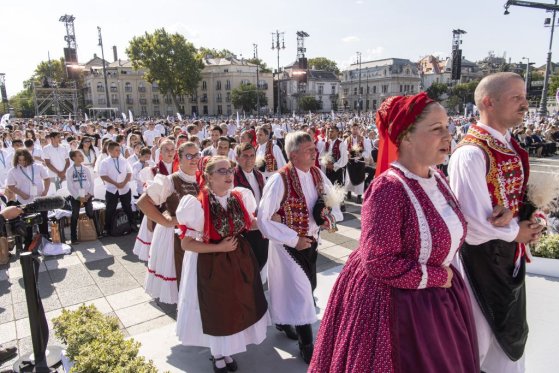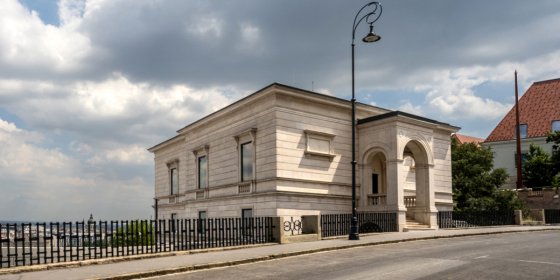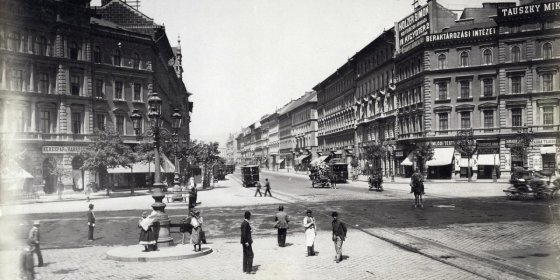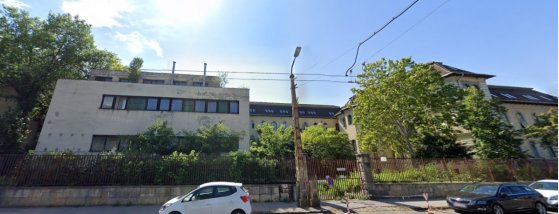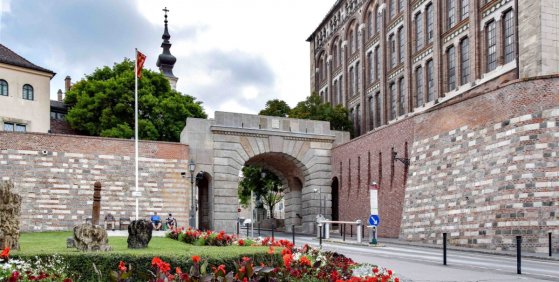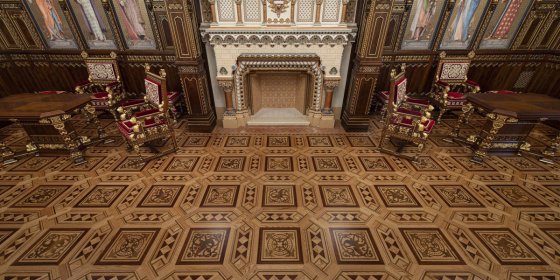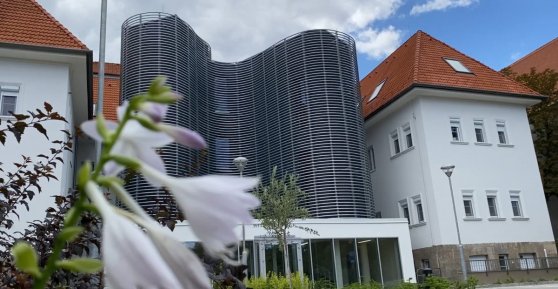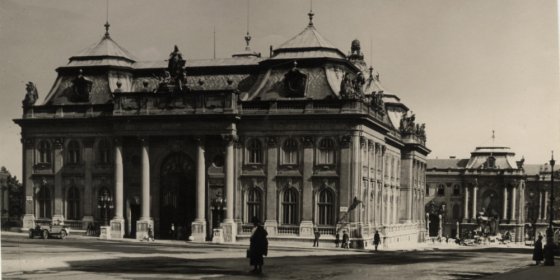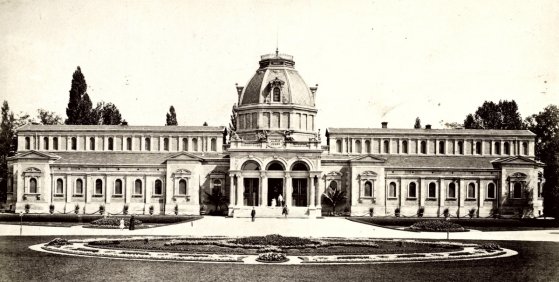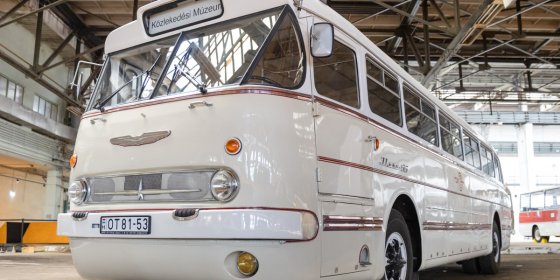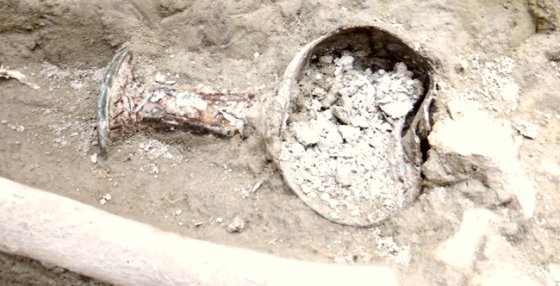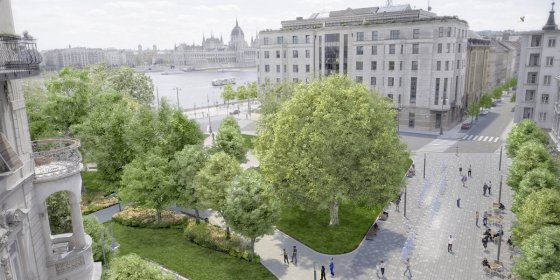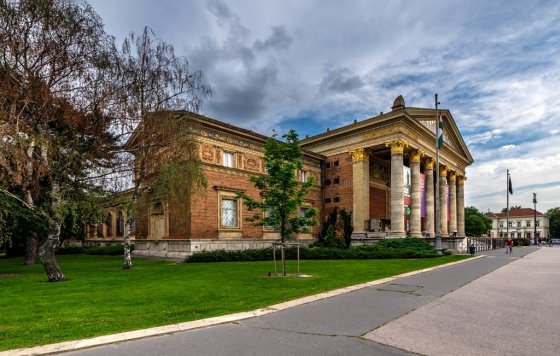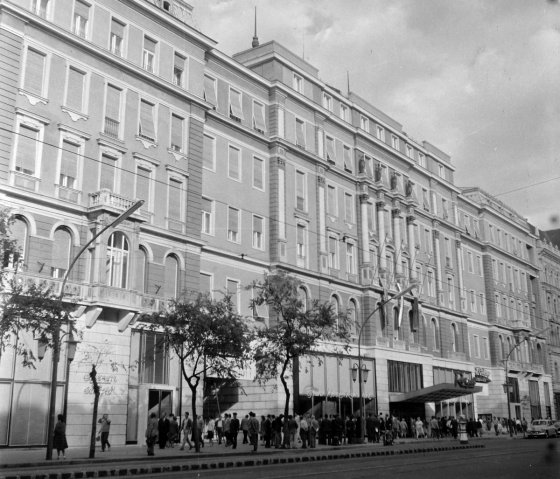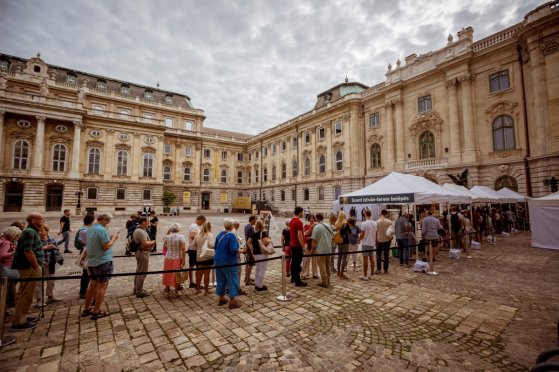 The Bridge Report, which brought a turning point in the history of Budapest
A travel report that changed the history of Pest and Buda, as well as Hungary. The little book contributed to the change of half a thousand years of legal customs and the implementation of an investment of unprecedented size and technical quality. This book was The Bridge Report [Hídjelentés in Hungarian].
The Bridge Report, which brought a turning point in the history of Budapest
A travel report that changed the history of Pest and Buda, as well as Hungary. The little book contributed to the change of half a thousand years of legal customs and the implementation of an investment of unprecedented size and technical quality. This book was The Bridge Report [Hídjelentés in Hungarian].
PestBuda
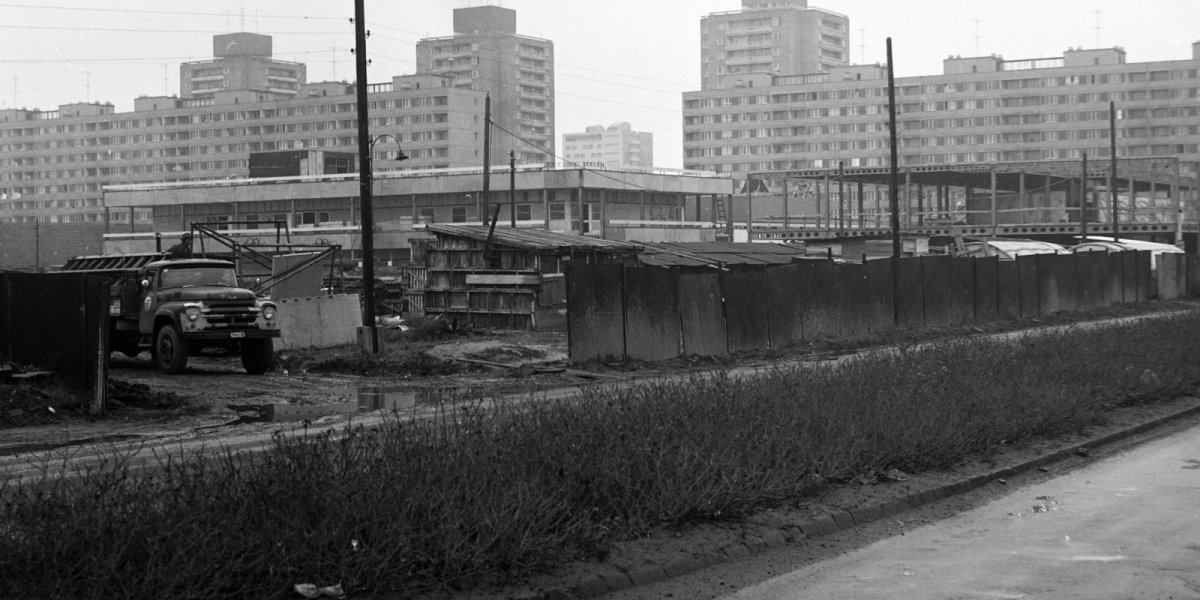 A new department store can replace the more than 40-year-old service house in Kelenföld
A new department store can replace the more than 40-year-old service house in Kelenföld
September 13, 2021 at 9:00 AM
In the early 1970s, people living in a housing estate in Kelenföld often complained about the lack of services, and in the second half of the decade, a service house was built to remedy this. It had almost everything needed on the two levels. The now obsolete building on the corner of Tétényi Road - Etele Road is now being sold by the municipalities of the capital and the 11th District, and a service house would be built again on the site.
András Mayerhoffer, the creator of the Hungarian Baroque style, died 250 years ago
September 12, 2021 at 9:30 AM
András Mayerhoffer, born in Salzburg, is one of the leading figures of Baroque-Rococo architecture in Hungary. He is also known as the creator of the so-called Grassalkovich or Gödöllő style. The works of the master builder and architect, who died 250 years ago, such as the first two-towered Catholic Church in Pest or the former Péterffy Palace in Piarista Street - are still defining elements of Budapest's cityscape.
A clock with a Hebrew dial has been installed in the synagogue of Óbuda
September 11, 2021 at 5:30 PM
The Old Buda Synagogue is celebrating its 200th anniversary this year, and has now regained its former façade decoration, the clock with the Hebrew dial.
A place already loved by the Romans - Discover the Roman Beach with Pestbuda
September 11, 2021 at 12:00 PM
If swimming or eating 'lángos' means relaxation, people usually think of Lake Balaton as a destination. However, Roman Beach offers a similar opportunity in Budapest. The first legal public Danube beach in the capital opened here in the summer of 2021 - after a long break. But the Roman Beach is much more than that. The area is the only place offering a real waterfront experience along the Danube section of Budapest, its special milieu captivates the visitors. If someone really wants to get to know the five-kilometre beach, get ready for a multi-hour trip as Pestbuda reporters did. Take a closer look at the beach with the author.
The Győző Czigler exhibition is still open at the Archives of Budapest
September 10, 2021 at 4:00 PM
The exhibition of Győző Czigler's architecture is open until the end of October. The Archives of the Budapest Capital's and the Hungarian Architectural Museum and Monument Documentation Centre's jointly organised exhibition presents the career of the much-used architect of Hungarian historicism with the help of tables and models.
Monument research on the Art Nouveau hospital building
September 10, 2021 at 9:30 AM
Most of the people living in the area still mention the North Pest Hospital as a former Russian hospital, whose buildings are located in Pestújhely, on a landscaped area of more than 7 hectares. The institution was originally built as a mental hospital in the Art Nouveau style. The plans for the renovation of the institution and the monument research were recently carried out by the owner, the 15th District Local Council.
A park would be created on the site of the former US military cemetery in Sasad
September 9, 2021 at 7:00 PM
A park would be created on Budaörsi Road, on the site of the former US military cemetery. The exact functions are still under discussion, including the possibility of an external exhibition area, which has many valuable shrubs and mature trees.
BKV will also be part of the Budapest100 programme
September 9, 2021 at 3:00 PM
This year, BKV is also joining the Budapest100 programme: the company's headquarters in Erzsébetváros and the Ferenc Electricity Converter can be seen the second weekend of September by the curious.
Bread and flour stamps were introduced 80 years ago in Budapest
September 9, 2021 at 10:00 AM
Although Budapest was seemingly peaceful in 1941, the effects of the war were already being felt. Meat consumption and the use of cars were restricted. Sugar and fat could only be bought on ration stamps from 1940, and 80 years ago, flour and bread stamps were introduced. This restriction affected Budapest and the surrounding area in September 1941.
New swimming pool opened in the city centre
September 8, 2021 at 2:30 PM
Built at 30 Vadász Street after a summer trial run, the V.30 Sports Centre, can be visited and tried out by anyone, not just by residents of the V district, from September. The facility, built with ecological and energy efficiency in mind, has a 25-metre swimming pool, a teaching pool and a spa with thermal water.
A little Rome in Budapest - The main altar of St Peter's Basilica was built in Heroes' Square in 1938
September 8, 2021 at 10:00 AM
The 52nd International Eucharistic Congress is taking place in Budapest these days, which one of the largest events in the Catholic Church. It is always a great honour for the city to host the event, and Budapest is lucky enough to host it for the second time. For the first time, in 1938, the organisers expressed their gratitude to the Vatican for the opportunity by building the main altar of St Peter's Basilica in Heroes' Square.
A memorial plaque was erected on the former residence of Julia Szendrey
September 7, 2021 at 5:30 PM
In the last months of her life, she lived at 13 Horánszky Street, formerly Zerge Street, in Józsefváros. Júlia Szendrey, poet, writer and translator, Petőfi's wife and muse. His memory is now commemorated by a plaque on the façade of a house in the Palace Quarter.
The famous Fészek Klub opened 120 years ago
September 7, 2021 at 9:00 AM
The Festők, Építészek, Szobrászok, Zenészek, Énekesek és Komédiások Klubja [Painters, Architects, Sculptors, Musicians, Singers and Comedians Club] or the Fészek Klub opened 120 years ago, on 7 September 1901, on the corner of Kertész Street and Dob Street. The legendary club has been a popular and beloved meeting place for the arts scene for decades, but is now more of an events venue. Just like the club scene of the old days, the original elegant Art Nouveau building and its lavish décor are a thing of the past.
The world is watching Budapest - The Eucharistic Congress has begun
September 6, 2021 at 9:00 AM
Budapest hosts the International Eucharistic Congress for the second time. In addition to the main venues - Heroes' Square, Hungexpo, St. Stephen's Basilica, Kossuth Square, Academy of Music - there will be programmes, concerts and stage performances in several parts of the city.
The renovated Lónyay-Hatvany villa on the Buda Várhegy was inaugurated
September 5, 2021 at 10:00 AM
The villa, originally designed by Miklós Ybl and built in 1872, was bombed, burnt down and demolished during the Second World War. It was completely rebuilt after the turn of the millennium, but has stood empty for the last few years. Recently renovated for the Lajos Batthyány Foundation, the building will serve as the future headquarters of the organisation.
The Outer Ring Road was inaugurated 125 years ago - Budapest's main road was opened on Hungary's millennium
September 4, 2021 at 10:00 AM
Today, Outer Ring Road is one of the busiest roads in Budapest, lined with beautiful residential houses. Its construction lasted for 25 years, to open it, houses had to be demolished, a railway station had to be moved away, an area had to be filled, but finally, 125 years ago, on 31 August 1896, the Budapest Public Works Council could officially hand it over to the Budapest community.
Tender for the design of the Hungarian Museum of Architecture
September 3, 2021 at 3:00 PM
On the site of the former BM-hospital at the corner of Bajza street and Városligeti fasor, the Hungarian Museum of Architecture and Documentation Centre for Historic Monuments is being formed. After demolition work was completed in the summer, the site is now reduced to two historicised sanatorium buildings. The planned building will be smaller than the demolished houses, leaving a large green area on the site.
The newest Vienna Gate is eighty-five years old
September 2, 2021 at 9:00 AM
Eighty-five years ago, in 1936 the Vienna Gate of the Buda Castle was rebuilt. The plan had already been conceived six years earlier, but because of the economic crisis the financial backing could only be secured for that time. The occasion for the construction was the two hundred and fiftieth anniversary of the recapture of Buda, which was on 2 September 1686.
The Neuschlosz Brothers created the inlaid parquet floor of the St. Stephen's Hall
September 1, 2021 at 3:30 PM
From 20 August, anyone can visit the rebuilt St. Stephen's Hall in the renewed south connecting wing of the Buda Castle. The beauty and uniqueness of the ballroom are enhanced by its special inlaid parquet flooring. But who created this unique flooring? Take a look at the work of the Neuschlosz Brothers.
New towers on Amerikai Road - The main building of the Mazsihisz Charity Hospital was renovated
September 1, 2021 at 10:00 AM
The new main building of the Mazsihisz Charity Hospital [Szeretetkórház] in Budapest on Amerikai Road was renovated. It was originally built in 1914 and returned to the community in 1994 from the Uzsoki Street Hospital. The renovated 2300 square metre building also got distinctive towers.
Budapest then and now – 6 photos showing how much the cityscape has changed over a century
August 31, 2021 at 9:00 AM
The change in Budapest can be surprising when looking at old pictures: the former riding hall behind the National Museum, the New Building (Újépület) on the site of the current Szabadság Square, the disappeared houses of Pest and Buda downtown, the former splendour of the Buda Palace, and the beautiful historic buildings which stood on the site of the series of hotels along the Danube. What has changed and what is constant? Take a look at the six pictures Pestbuda collected.
Diana, Margit, Erzsébet and Hungária - Forgotten baths from the past of Budapest
August 29, 2021 at 8:30 AM
This summer is slowly coming to an end, and the sudden cooler weather is no longer good for going to the beach. Fortunately, Budapest also has many baths, which we can visit even in cooler weather; it is enough to think of Széchenyi, Rudas or Gellért. Unfortunately, there are also a good number of baths that we can no longer enjoy today, even though they were architecturally significant as well. Here are 3 + 1 baths from the past of Budapest!
The Ikarus 66 was an iconic piece of Hungarian bus production – Now we can see it renovated in the Museum of Transport
August 28, 2021 at 12:00 PM
A special bus was presented to the general public yesterday by the Museum of Transport: one of the last ten Ikarus 66 models produced. The vehicle was exhibited after several years of restoration in Kőbánya, in the Diesel Hall of the former Northern Locomotive Workshop. Budapest once expected these Ikarus buses to make transportation faster and more convenient, but passengers in the capital found them uncomfortable.
Roman burials were excavated in Óbuda
August 27, 2021 at 2:30 PM
Experts from the Budapest History Museum found a late Roman burial on one of the plots on Óbuda Street, where the remains of a stone wall and storage pits have also been found.
Where Mór Jókai and Johann Strauss Jr. met - A fire destroyed the German Theatre in Lipótváros
August 27, 2021 at 12:30 PM
At 24 Báthory Street, 5th District, it can be found out only from a memorial plaque that the German Theatre of Pest once stood here. This was already the third venue for German acting in Pest, but the theatre could not function here for a long time either. Twenty years after its opening, on 20 December 1889, a fire destroyed the building, in which Mór Jókai also turned, and an operetta written from his work was even performed here.
Alteration of the embankments can begin next summer
August 26, 2021 at 7:00 PM
Representatives of BKK Centre for Budapest Transport and design companies have signed a contract, according to which they will prepare construction plans for the makeover of the inner city Danube Bank. The renovation can start next summer - according to the BKK website.
Preparations for the renovation of the Kunsthalle have begun
August 26, 2021 at 2:00 PM
The building of the Kunsthalle in Heroes' Square was built for the Millennium Exhibition according to the plans of architect Albert Schickedanz. On the 125th anniversary of its existence, preparations began for the complete renovation of the building.
The Memorial Stone of Heroes was torn down 70 years ago
August 26, 2021 at 11:00 AM
In the shadow of the Millennium Monument, another work is hidden in the Heroes' Square. The Memorial Stone of Heroes symbolises a mass grave, originally erected in 1929, in memory of the soldiers of the First World War resting in anonymous graves, but it was not mourning that was its primary message, but mobilisation against the changing millennial boundaries. The memorial stone was demolished in 1951 but re-erected in the spring of 1956 and then in 2001, in a different form and with new messages.
The luxury hotel was designed for tourists from the West - the Royal reopened 60 years ago
August 25, 2021 at 1:00 PM
The former legendary hotels of Budapest were almost completely destroyed in the Second World War and in the 1950s, and in the Rákosi era, no money was spent on building luxury hotels in the country, as there was no solvent demand for it. The situation changed after the defeat of the revolution and war of independence of 1956: tourists from the West and the currency they spent here became important to the country’s new leadership. Large-scale hotel developments began, among them one of the first was rebuilding the former luxury hotel, Royal, which reopened in August 1961.
Thousands were curious about the biggest architectural attraction of 2021
August 25, 2021 at 10:00 AM
Probably the biggest architectural attraction of 2021 is the reconstruction of the southern connecting wing of the Buda Castle and the re-creation of the St. Stephen's Hall. On the festive weekend of 20 August, an unprecedented crowd waited at the palace courtyard to enter the now handed over part of the building. Krisztina Sikota, Deputy Director General of Tourism and Culture of the Várkapitányság, evaluated the events for our site.
More articles
 The Bridge Report, which brought a turning point in the history of Budapest
A travel report that changed the history of Pest and Buda, as well as Hungary. The little book contributed to the change of half a thousand years of legal customs and the implementation of an investment of unprecedented size and technical quality. This book was The Bridge Report [Hídjelentés in Hungarian].
The Bridge Report, which brought a turning point in the history of Budapest
A travel report that changed the history of Pest and Buda, as well as Hungary. The little book contributed to the change of half a thousand years of legal customs and the implementation of an investment of unprecedented size and technical quality. This book was The Bridge Report [Hídjelentés in Hungarian].
 Drama on the university wall - The heroic monument was planned 95 years ago
In the constant hustle and bustle of the Egyetem Square in Pest, the students may not even notice the monument that decorates the short section of wall between the church and the central building of ELTE. However, it commemorates their predecessors, the heroes who fought for their country in World War I, and those who heroically helped them. The first design of the dramatically collapsing soldier was born in 1928, ninety-five years ago.
Drama on the university wall - The heroic monument was planned 95 years ago
In the constant hustle and bustle of the Egyetem Square in Pest, the students may not even notice the monument that decorates the short section of wall between the church and the central building of ELTE. However, it commemorates their predecessors, the heroes who fought for their country in World War I, and those who heroically helped them. The first design of the dramatically collapsing soldier was born in 1928, ninety-five years ago.
 A message from the former school: An exhibition in memory of János Neumann was opened at the Fasori Secondary School
An exhibition was opened in János Neumann's former school, the Fasori Lutheran Secondary School, on the occasion of the 120th anniversary of the world-famous mathematician's birth. In the exhibition presenting the former Neumann milieu, paintings, graphics, photos, furniture, and objects tell the story of the art-supporting spirit of the noble bourgeois family at the turn of the century.
A message from the former school: An exhibition in memory of János Neumann was opened at the Fasori Secondary School
An exhibition was opened in János Neumann's former school, the Fasori Lutheran Secondary School, on the occasion of the 120th anniversary of the world-famous mathematician's birth. In the exhibition presenting the former Neumann milieu, paintings, graphics, photos, furniture, and objects tell the story of the art-supporting spirit of the noble bourgeois family at the turn of the century.

